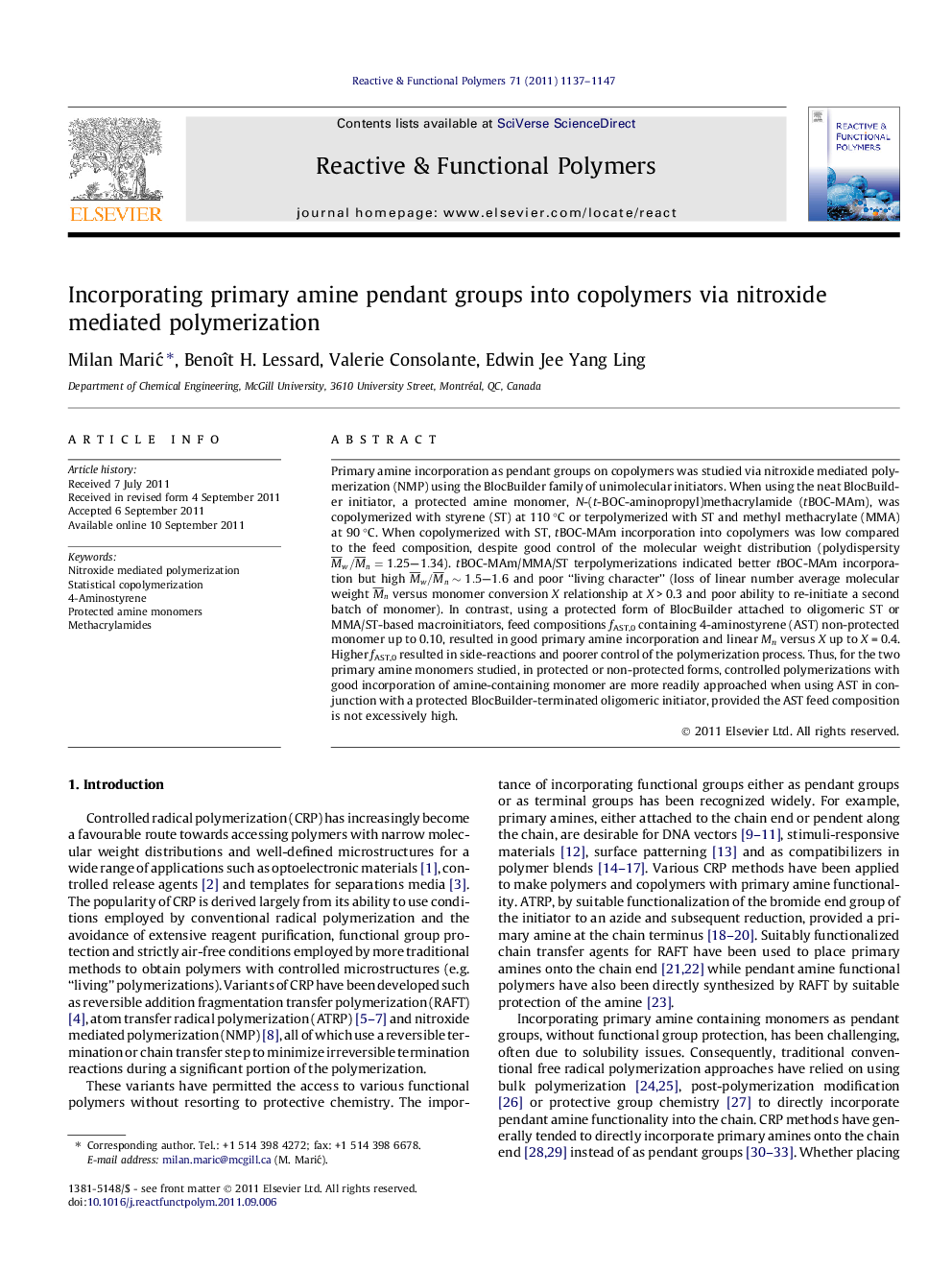| Article ID | Journal | Published Year | Pages | File Type |
|---|---|---|---|---|
| 5210529 | Reactive and Functional Polymers | 2011 | 11 Pages |
Abstract
Primary amine incorporation as pendant groups on copolymers was studied via nitroxide mediated polymerization (NMP) using the BlocBuilder family of unimolecular initiators. When using the neat BlocBuilder initiator, a protected amine monomer, N-(t-BOC-aminopropyl)methacrylamide (tBOC-MAm), was copolymerized with styrene (ST) at 110 °C or terpolymerized with ST and methyl methacrylate (MMA) at 90 °C. When copolymerized with ST, tBOC-MAm incorporation into copolymers was low compared to the feed composition, despite good control of the molecular weight distribution (polydispersity M¯w/M¯n=1.25-1.34). tBOC-MAm/MMA/ST terpolymerizations indicated better tBOC-MAm incorporation but high M¯w/M¯nâ¼1.5-1.6 and poor “living character” (loss of linear number average molecular weight M¯n versus monomer conversion X relationship at X > 0.3 and poor ability to re-initiate a second batch of monomer). In contrast, using a protected form of BlocBuilder attached to oligomeric ST or MMA/ST-based macroinitiators, feed compositions fAST,0 containing 4-aminostyrene (AST) non-protected monomer up to 0.10, resulted in good primary amine incorporation and linear Mn versus X up to X = 0.4. Higher fAST,0 resulted in side-reactions and poorer control of the polymerization process. Thus, for the two primary amine monomers studied, in protected or non-protected forms, controlled polymerizations with good incorporation of amine-containing monomer are more readily approached when using AST in conjunction with a protected BlocBuilder-terminated oligomeric initiator, provided the AST feed composition is not excessively high.
Related Topics
Physical Sciences and Engineering
Chemistry
Organic Chemistry
Authors
Milan MariÄ, Benoît H. Lessard, Valerie Consolante, Edwin Jee Yang Ling,
